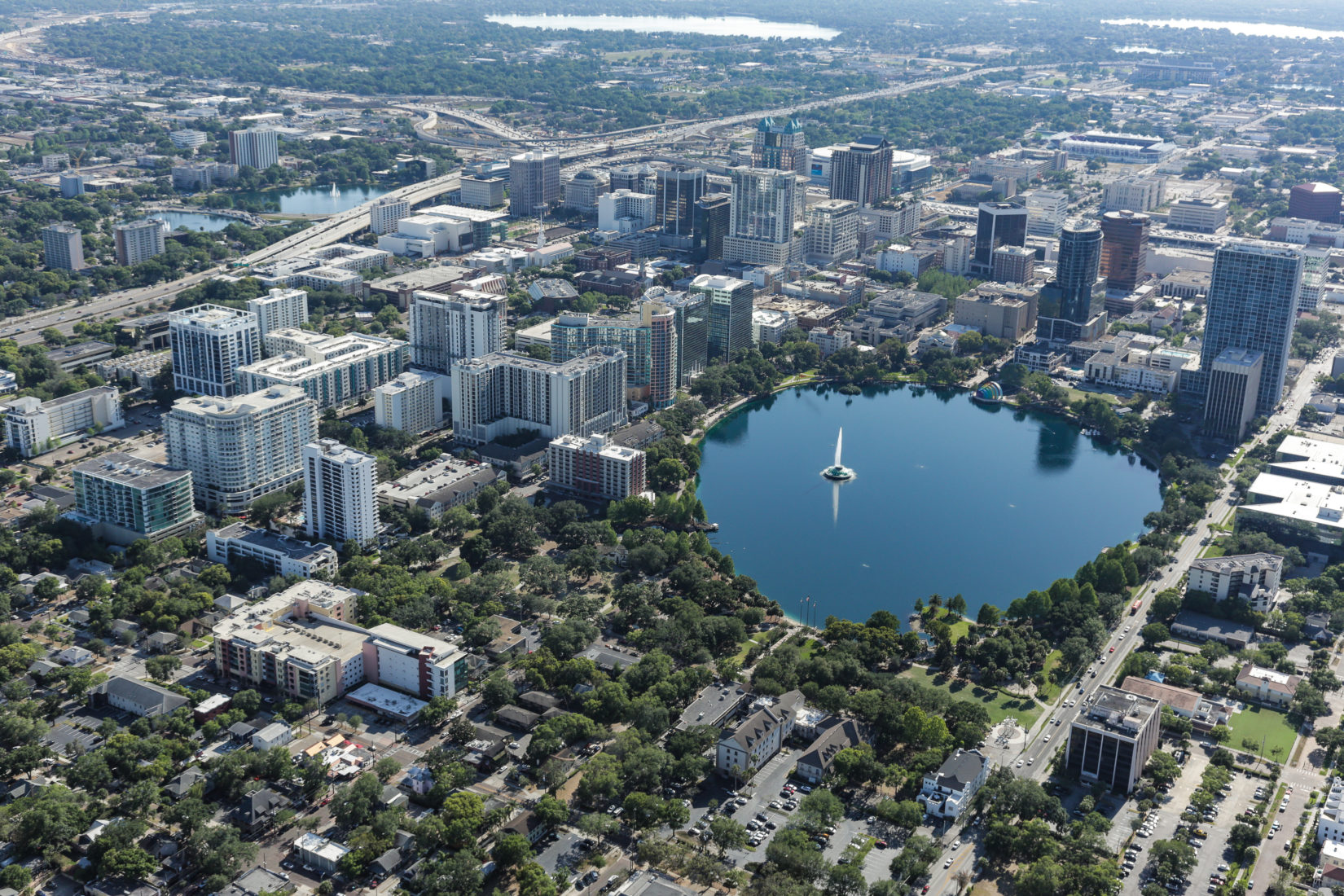The Orlando region is welcoming more than 1,000 new residents a week, and in fact, it has been adding that many people a week for the last 60 years. Pause for a second and do the math.
People aren’t just looking to visit Orlando’s world-class attractions; they’re putting down roots and taking advantage of all the region has to offer. This may come as no surprise to those who see the construction and investment boom currently happening in Orlando.
Orlando’s Fast Growth Rate In a Category All It’s Own
What might be surprising, however, is just how significant this growth is compared to other major metros across America, as well as how Orlando’s demographics differ from other Florida cities. Turns out, Orlando is in a category all its own when it comes to growth and in-migration; the dynamics of which are explored below.
From 2018 to 2019, the four-county region that makes up the Orlando Metropolitan Statistical Area (MSA) – Lake, Orange, Osceola and Seminole County – grew by 2.4 percent to reach a population of just above 2.5 million people.[2]
That is four times the rate of growth of the United States, and the second-fastest growth rate of the 30 largest cities in America. For comparison, two of the other fastest-growing cities in America, Atlanta and Denver, grew at 1.4 percent and 1.5 percent, respectively.
Approximately 30 percent of Orlando’s population growth from 2018 to 2019 was organic; the number of births outnumbered deaths in the region. The other 70 percent of the growth was due to positive net migration, both from domestic and international locations.[3]
Expanding our view to examine the greater seven-county region that makes up Central Florida (Brevard, Lake, Orange, Osceola, Polk, Seminole and Volusia County), we see that an overwhelming 90 percent of the population growth was from in-migration, translating to approximately 1,100 new residents moving to Central Florida every week.
Another way to consider the numbers: one in every 112 Orlando residents moved to the region within the last year, and one in every seven residents moved here since 2010, half of them (49 percent) from an international location.
One in every seven Orlando residents moved here since 2010, half of them from an international location.
New Orlando Residents Aren’t Just Snowbirds
How do these numbers compare to the other fast-growing, dynamic cities in America? In Atlanta, you would need to corral more than twice as many people (18) to find someone who moved to the metro since 2010. In Denver, one in every 12.
Certainly, part of the reason Orlando has gained so many new residents from outside the region is thanks to Florida’s overall growth and popularity as nationwide demographics continue to shift from the Northeast south into Sun Belt states and west.
Overall, the top five metros in America for percent population growth from 2018-19 are in the sunbelt, two in Florida. Charlotte NC, Orlando FL, Tampa FL, Las Vegas NV, and Phoenix AZ are currently the top metros for population growth in the country.[4]
While Florida may have a reputation as the land of snowbirds and pensioners, Orlando’s new residents are far from looking to retire. Analyzing geographic mobility data from the U.S. Census Bureau for 2019, 46 percent of new Orlando residents who moved from outside Florida within the last year are prime working age – between the ages of 25 and 54 – and only 12 percent are over the age of 65.[5]
Meanwhile, in Tampa, 16 percent of new residents from outside the region last year were above the age of 65. None of this should come as a shock. Orlando has one of the youngest median ages in the state at just above 37, while Tampa’s median age matches the state average at 42.
Newcomers Are Highly Educated and Diverse
Orlando’s new residents are also highly educated. A whopping 69 percent of the cohort above age 25 moving into the region has at least some college education and 14 percent have a graduate or professional degree. The new cohort is also diverse; over one-third of those moving into the region are Hispanic or Latino. Just under eight percent of the new residents are Asian, two times higher than Orlando’s overall demographics, where Asians make up four percent of the population.
Using IRS migration data (the most recent dataset available being from 2017 to 2018), the origins of these new residents can be determined (at least, movers from within the United States). By aggregating counts of tax return filings of individuals who filed in a new location between 2017 and 2018, the two largest contributing regions to Orlando’s population growth have been Miami and New York . Miami-Dade County alone accounted for 3,015 (net) movers that year. Queens County, Bronx County, and Kings County in New York accounted for 2,507 movers into the region during the same time frame.[6]
New Residents Flock From Slow-Growth States
On the aggregate, when the data is overlaid with overall population growth rates, Orlando is gaining individuals from slower growth states; particularly concentrated in the Northeast and Midwest. The data is a mixed bag in high-growth states, with varied ranges between metros located near each other geographically (see Southern California or Central North Carolina as examples).
One possible interpretation of this phenomenon is that Orlando and other high-growth regions are seeing an exchange in talent that flows in both directions.
All this data underscores the region’s strengths and a growth mindset that doesn’t take long to discover about Orlando by just being here. New faces are moving into the region every day who are young, educated, diverse and looking to take part in Orlando’s expanding business community.
They are coming from across the country, and from all over the world, giving Orlando the highest concentration of new residents of any major metro in the country.
Spend any time getting to know the people who call Central Florida home and you’ll soon discover that data isn’t needed for insight into Orlando’s population boom.
SOURCES
[1] US Census Bureau, Population Division. Estimates of the Components of Resident Population Change for Counties in Florida: April 1, 2010 to July 1, 2019 (CO-EST2019-COMP-12)
[2] US Census Bureau, American Community Survey, 5 Year Estimates. Table S0101
[3] US Census Bureau, Population Division. Estimates of the Components of Resident Population Change for Counties in Florida: April 1, 2010 to July 1, 2019 (CO-EST2019-COMP-12)
[4] US Census Bureau, American Community Survey, 5 Year Estimates. Table S0101
[5] Us Census Bureau, American Community Survey, 5 Year Estimates. Table S0701
[6] EMSI analysis of IRS tax migration

